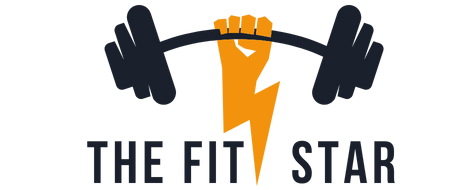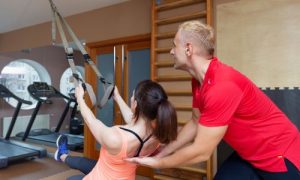Unlocking the Benefits of the Skier Swing Exercise
Introduction
Contents
Experience the ultimate full-body workout with the Skier Swing exercise. Burn calories and build strength with this dynamic movement. Winter sports fanatics looking to beautify their performance and strength on the slopes often turn to numerous sports that mimic the actions and needs of skiing. One such workout that has gained a reputation in recent years is the skier’s swing. In this comprehensive weblog post, we are able to delve into the arena of the skier’s swing, exploring its benefits, right form and technique, targeted muscle organizations, versions, and progressions, in addition to safety concerns. Whether you’re a seasoned skier or truly seeking to enhance your general health, this article will reveal the secrets and techniques of the skier’s swing and empower you to harness its snowy energy.
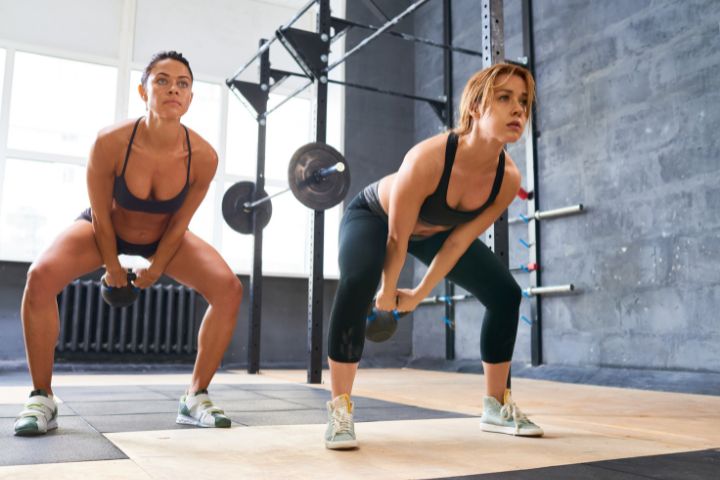
Understanding the Skier Swing Exercise
The skier-swing exercise can be best defined as a dynamic and full-frame motion that mimics the action of skiing. It draws inspiration from the fluid and effective motions of professional skiers as they navigate the slopes. By enticing an extensive range of muscle groups, this workout gives a completely unique and powerful way to decorate electricity, staying power, and balance in ice sports lovers.
Proper Form and Technique
To attain the most advantages from the skier’s swing exercise, it is important to grasp the proper form and approach. Begin by assuming a standing position with your toes shoulder-width apart, knees slightly bent, and your weight evenly distributed. As you initiate the workout, consider yourself gliding down a snowy slope, and with controlled actions, hinge forward on the hips at the same time as maintaining a straight lower back. Simultaneously, swing your arms back and forth in a coordinated manner, mimicking the motion of a skier propelling themselves forward. Remember to breathe deeply and rhythmically at some stage in the exercise, inhaling as you swing your palms again and exhaling as you swing them ahead. Avoid common mistakes like rounding your back or using immoderate momentum, as those can compromise the effectiveness and safety of the workout.
Targeted Muscle Groups
The skier-swing exercise engages numerous key muscle groups, making it a top-notch choice for overall lower body and core power development. The first muscle tissue targeted encompasses:
Quadriceps:
The effective muscular tissues at the front of the thigh play a critical position in knee extension and absorb shock for the duration of snowboarding. Engaging the quadriceps throughout the Skier Swing workout can help enhance their energy, allowing skiers to navigate slopes with greater control and balance.
Hamstrings:
Strong and bendy hamstrings are essential for winter sports activities overall performance, as they provide resources for knee flexion and hip extension. By incorporating the Skier Swing workout into your training routine, you may effectively support and condition your hamstrings, reducing the risk of lines or injuries.
Glutes:
The gluteal muscle tissues, which include the gluteus Maximus, mediums, and minimums, are crucial for generating electricity and balance at some stage in skiing. By activating and strengthening these muscle tissues through the Skier Swing workout, you can enhance your capacity to generate force and maintain balance while gliding down the slopes.
Core muscle groups:
A sturdy center is essential for maintaining stability, balance, and green movement for the duration of skiing. The skier’s swing exercise engages the core muscle groups, including the abdominals, oblique’s, and lower back, increasing their strength and patience. A solid middle foundation contributes to normal athleticism and decreases the hazard of falls or harm.
Upper frame engagement:
While the skier’s swing frequently focuses on the lower body and middle, it also involves the activation of the arm, shoulder, and back muscle tissues. The coordinated swinging movement of the arms for the duration of the exercise enables to improve upper frame energy and endurance, which can in addition enhance average overall performance at the slopes.
Benefits of the Skier Swing Exercise
The skier’s swing exercise has a mess of benefits that could directly affect your skiing abilities and universal health level:
Improved cardiovascular fitness:
The skier’s swing is a cardio workout that elevates your coronary heart rate and stimulates cardiovascular persistence. By incorporating this exercise into your routine, you can enhance your overall stamina and patience on the slopes.
Enhanced lower frame strength:
The dynamic nature of the skier’s swing engages the decrease in body muscle mass, such as the quadriceps, hamstrings, and glutes, resulting in stepped-forward electricity and energy. This translates to more desirable snowboarding performance, specifically at some stage in worrying man oeuvres and turns.
Increased muscular staying power:
Skiing requires sustained muscular effort over prolonged durations. The Skier Swing workout, with its repetitive swinging movement, challenges your muscle mass to endure and adapt to an extended hobby. Regular exercise can enhance muscular persistence, allowing you to ski longer without experiencing fatigue.
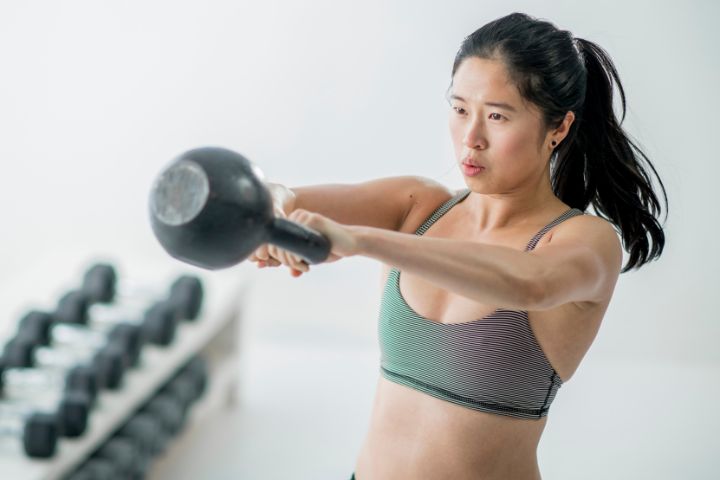
Calorie burning potential:
The skier swing workout is an excessive-intensity movement that expends a sizeable amount of electricity. By incorporating it into your fitness routine, you may efficiently burn calories and contribute to weight control, all while building strength and enhancing athletic overall performance.
Core stability and stability:
Skiing demands a strong and solid core to maintain stability and manipulate while navigating uneven terrain. The skier’s swing exercise targets the core muscle groups, promoting their electricity and balance. Strengthening your center through this exercise can enhance your capacity to hold balance, decreasing the chance of falls or accidents on the slopes.
Injury Prevention and Rehabilitation
The skier-swing workout plays an important role in damage prevention and rehabilitation for winter sports enthusiasts. By strengthening key muscle groups involved in skiing, together with the quadriceps, hamstrings, and glutes, the workout enables you to reduce the chance of common snowboarding injuries, such as ACL tears or decreased lower back traces. Additionally, the controlled and low-effect nature of the skier’s swing makes it a powerful exercise for people recuperating from knee or back injuries. However, it is important to consult a healthcare professional for customized guidance and to make sure the exercise is appropriate for your particular situation.
Variation and Progression
To usually mission yourself and develop on your health journey, it is important to discover versions and progression strategies of the skier’s swing exercise. Here are some alternatives to keep in mind:
Single-leg skier swing:
Perform the skier swing exercise while balancing on one leg. This version, in addition, activates the stabilizing muscle tissues and challenges your stability and coordination.
Skier Swing with Weights:
Incorporate dumbbells or kettlebells into the workout to increase the resistance and intensity. This version provides an additional assignment to the muscle tissues and promotes strength improvement.
Side-to-facet skier swing:
Instead of swinging your hands backward and forward in a forward movement, contain a lateral swinging motion. This version engages unique muscle fibers and promotes multidirectional electricity and stability.
In terms of development strategies, you could steadily increase the velocity and depth of your ski swing and push yourself to perform the workout with more power and control. Additionally, including resistance or weights as you become more gifted can also contribute to strength improvement. Incorporating unstable surfaces, including a balance board or foam pad, can also create a balance assignment, forcing your muscular tissues to evolve and improve.
Incorporating the Skier Swing into Your Fitness Routine
The beauty of the skier’s swing workout lies in its versatility, as it may be integrated into fitness workouts for people of various health tiers. Whether you are an expert skier, a winter sports enthusiast, or genuinely seeking to improve your universal health, the Skier Swing can be tailored to satisfy your precise needs. Consider incorporating the exercise into a complete winter sports schooling application, combining it with other physical activities that target unique muscle groups and snowboarding-associated moves. To help you get started, here are some sample workouts that contain the skier’s swing exercise:
Beginner’s Routine:
Warm up with light cardiovascular exercise, along with brisk walking or biking, for 5–10 minutes.
Perform 2 sets of 10–12 repetitions of the skier swing exercise, focusing on proper form and technique.
Follow with bodyweight physical games, including squats, lunges, and planks, focused on the lower frame and core.
Cool down with light stretching, protecting every stretch for 15–30 seconds.
Intermediate Routine:
Begin with a 5- to 10-minute warm-up that includes dynamic stretches and mobility physical activities.
Perform three sets of 12–15 repetitions of the skier swing exercise, gradually increasing the depth and velocity.
Incorporate resistance-training physical activities, inclusive of weighted squats, deadlifts, and rows, to further decorate typical strength.
Include stability and balance sports, inclusive of unmarried-leg physical games and stability board paintings, to project your middle and enhance balance.
Conclude with a cool-down that consists of static stretches for all major muscle groups.
Advanced Routine:
Start with a dynamic warm-up, together with exercises consisting of jumping jacks, high knees, and leg swings.
Perform 4 units of 15-20 repetitions of the skier swing exercise, incorporating versions inclusive of single-leg swings or weighted swings.
Combine the skier’s swing with plyometric physical games, which include container jumps or lateral bounds, to beautify explosive electricity and agility.
Include advanced energy sports like Bulgarian break-up squats, Romanian deadlifts, and pull-ups to further build your muscle mass.
Finish with a fab-down that consists of foam rolling and static stretching for muscle healing and versatility.
Safety Considerations and Precautions
While the skier’s swing exercise is normally safe for most individuals, it is essential to take certain precautions, especially if you are an amateur or have pre-existing conditions. Here are a few key concerns:
Consult with a healthcare expert:
If you’ve got any underlying clinical conditions, injuries, or concerns, it is crucial to consult with a healthcare expert or a certified health trainer before incorporating the skier’s swing exercise into your routine. They can provide personalized guidance and make certain that the exercise is suitable for your unique scenario.
Proper warm-up and cool-down:
Always commit time to warming up your muscle groups before conducting any exercise. This can consist of mild cardiovascular exercises and dynamic stretches. Similarly, cool down with static stretches to promote muscle restoration and versatility.
Listen to your frame:
Pay attention to how your body feels in the course of the skier swing exercise. If you experience aches, dizziness, or immoderate fatigue, seek relief and relaxation. It is important to pay attention to your body’s signals and avoid overexertion or pushing past your limits.
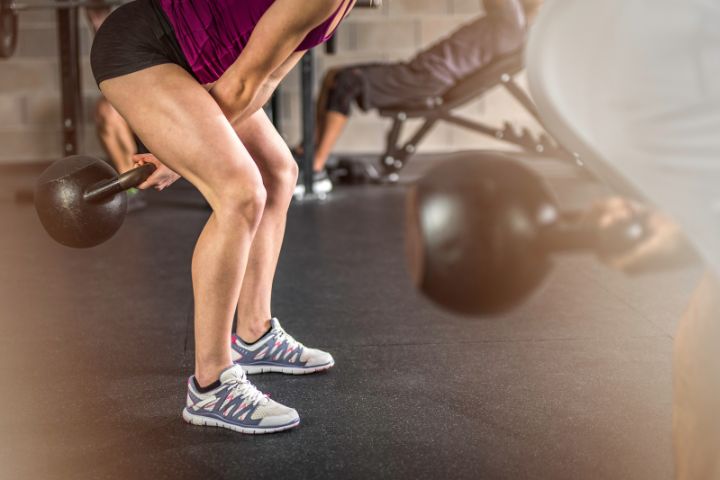
Conclusion:
The skier’s swing exercise is an effective tool for unlocking snowy electricity and enhancing your overall winter sports performance. By mastering its right form and approach, focusing on particular muscle groups, and exploring variations and progressions, you could harness the overall potential of this exercise. Remember to priorities protection, consult specialists when needed, and steadily incorporate the ski swing into your fitness routine. Embrace the snowy strength it offers and embark on a journey of stepped-forward cardiovascular fitness, more advantageous decreased frame energy, and expanded muscular persistence. Let the skier’s swing propel you to new heights on the slopes and in the past.
Frequently Asked Questions (FAQs):
Is the Skier Swing workout appropriate for novices? A: Yes,
The skier’s swing exercise can be adapted for novices. It is vital to start with proper shape and technique, focusing on controlled moves, and gradually increasing depth as you build energy and familiarity with the workout.
Can the Skier Swing workout assist in enhancing snowboarding’s overall performance?
Absolutely! The Skier Swing workout goals key muscle corporations involved in skiing, including the quadriceps, hamstrings, glutes, and middle. By strengthening By enhancing muscle mass and enhancing standard health, the workout can contribute to stepped forward in snowboarding’s overall performance, stability, and manipulation on the slopes.
Can skier-swing exercise help with weight loss?
The Skier-swing exercise is an excessive-intensity movement that can contribute to calorie burning and weight management. However, weight loss also depends on factors such as the basic eating regimen, lifestyle, and person’s metabolism. Incorporating the skier’s swing into a properly-rounded health routine, along with a balanced diet can aid weight reduction efforts.
Is the skier’s swing exercise appropriate for people with knee or lower back problems?
The skier’s swing exercise may be beneficial for strengthening key muscle groups that guide the knees and lower back. However, when you have pre-existing knee or lower back issues, it’s essential to seek advice from with a healthcare expert or a qualified fitness teacher before trying the workout. They can provide guidance on adjustments and ensure the Exercise is suitable for your situation.
Are there any age restrictions for the Skier Swing workout?
Skier-swing exercise can be achieved by people of numerous ages. companies, provided they have the physical ability and proper shape. However, it is It is important to consider gender barriers and talk over them with a healthcare provider. expert if you have any worries or specific situations.
Can I carry out the skier swing exercise at some stage while pregnant?
It is critical to visit a healthcare expert earlier than accomplishing any workout recurring throughout pregnancy. They can provide customized steerage. based totally on your specific instances, and make certain the workout is safe and appropriate for you and your toddler.
